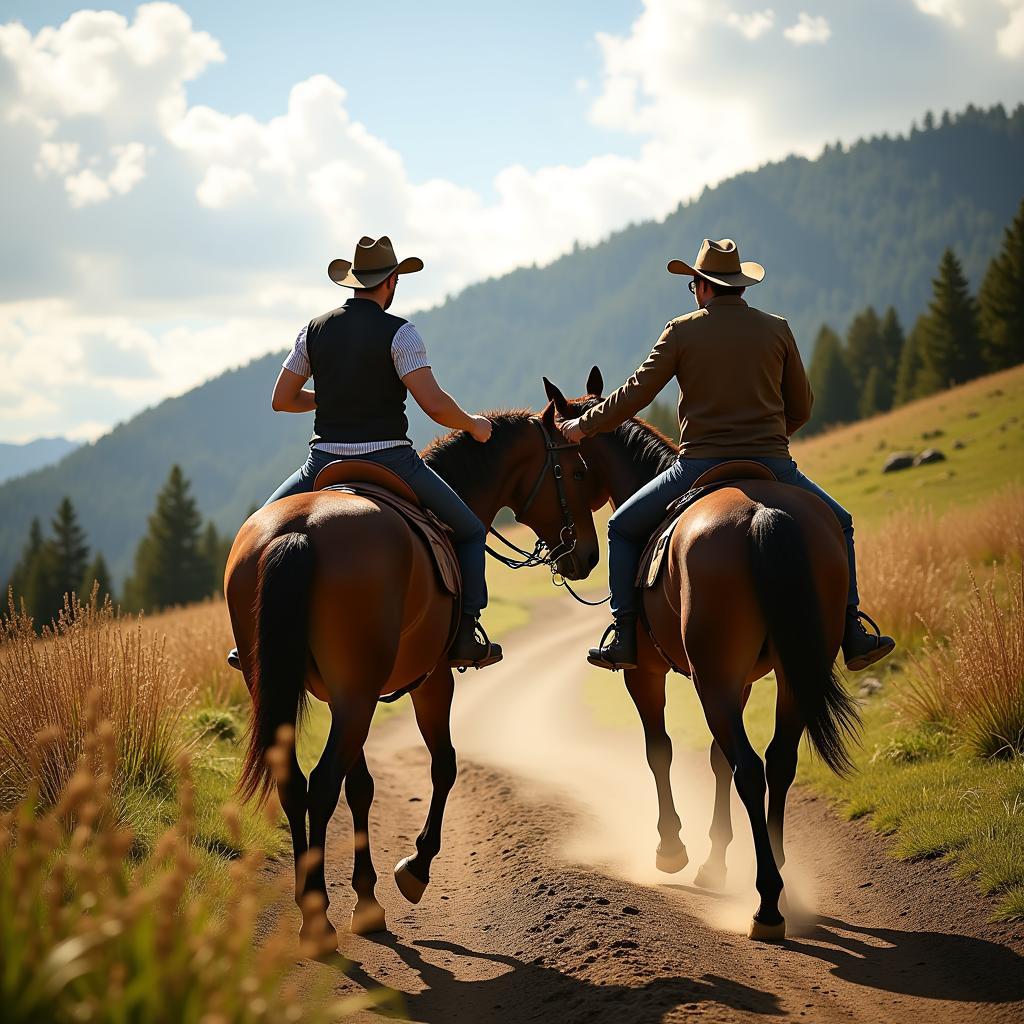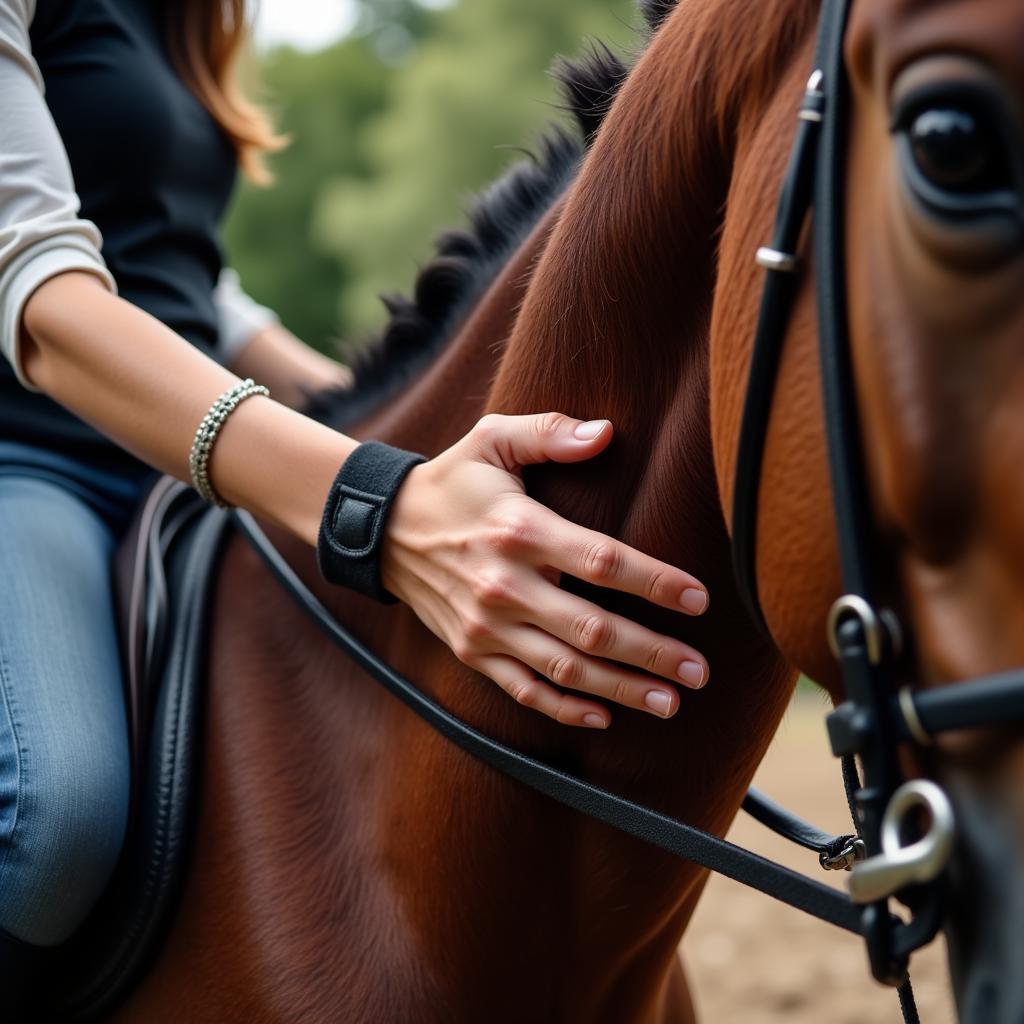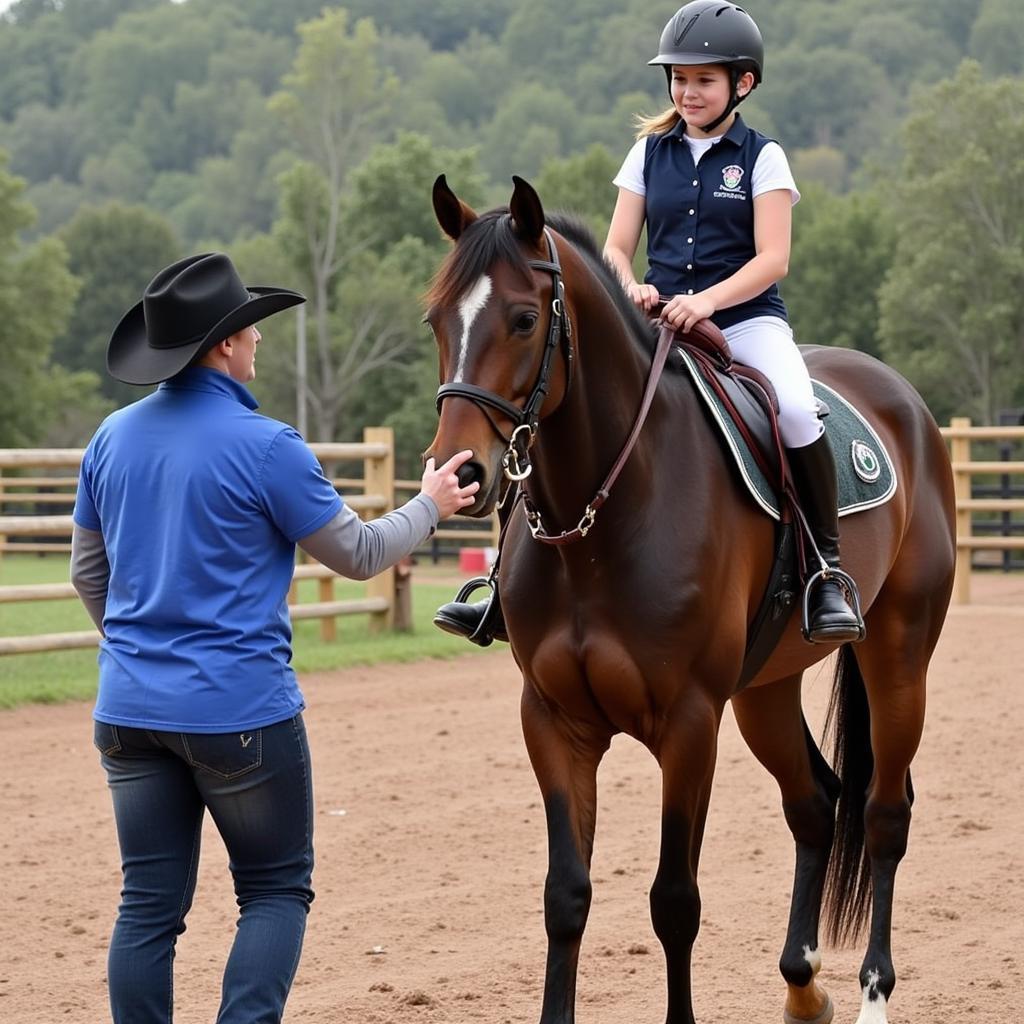“Giddy Up Horse!” It’s a phrase ingrained in our cultural consciousness, often associated with cowboys, wild west adventures, and the thrill of a horse’s powerful stride. But beneath the surface, “giddy up” represents a deeper connection between humans and horses, a shared language built on trust, respect, and understanding.
 Horse and Rider Giddy Up
Horse and Rider Giddy Up
Beyond the Words: Decoding “Giddy Up”
While not a formal equestrian term, “giddy up” encapsulates the essence of asking a horse to move forward. It’s a call to action, often accompanied by gentle leg cues and a shift in the rider’s weight. But it’s more than just a command; it’s an invitation to collaborate, to embark on a journey together.
The Language of Trust and Partnership
Horses are incredibly perceptive animals. They communicate through a complex system of body language, vocalizations, and even subtle shifts in energy. When we say “giddy up,” we’re entering this intricate conversation, building a dialogue that extends beyond words.
Understanding this language is crucial for any aspiring equestrian. It’s about learning to read the horse’s responses, to interpret their cues, and to adjust our own communication accordingly. A successful “giddy up” is a testament to a partnership built on mutual trust and respect.
 Building a Connection with Your Horse
Building a Connection with Your Horse
Mastering the Art of “Giddy Up”
So, how do you master the art of “giddy up?” It starts with a solid foundation in horsemanship, encompassing proper riding techniques, knowledge of horse behavior, and clear communication.
Essential Tips for a Successful “Giddy Up”:
- Establish Clear Cues: Consistency is key. Use a specific voice command (“walk on,” “let’s go,” or even a gentle click of the tongue) along with light leg pressure to signal your intention.
- Be Patient and Persistent: Like learning any new language, it takes time for a horse to understand your cues. Be patient, offer positive reinforcement, and celebrate small victories.
- Read the Horse’s Body Language: Is the horse relaxed and attentive? Are their ears forward, signaling they’re listening? Paying attention to these subtle cues will help you gauge their understanding and adjust your approach as needed.
- Seek Guidance from Experienced Equestrians: Taking lessons from a qualified riding instructor can significantly accelerate your learning curve and help you develop a deeper understanding of equine communication.
 Young Rider Learning Horsemanship
Young Rider Learning Horsemanship
From Beginner to Experienced Rider: The Journey Continues
“Giddy up” may seem like a simple phrase, but it represents the gateway to a rewarding journey of horsemanship. With dedication, patience, and a genuine desire to understand these magnificent creatures, you can experience the true magic of connecting with a horse and embarking on countless adventures together.
Whether you dream of riding through open fields, competing in equestrian events, or simply enjoying the companionship of these gentle giants, mastering the art of “giddy up” is the first step towards a fulfilling equestrian journey.
Frequently Asked Questions
What are some other ways to cue a horse to move forward?
Beyond “giddy up,” common cues include:
- Verbal Cues: “Walk on,” “Let’s go,” or a gentle “cluck” sound.
- Leg Pressure: Lightly squeezing with your legs behind the girth area.
- Shifting Your Weight: Subtly shifting your weight forward can encourage the horse to move.
How do I know if my horse understands my cues?
A horse that understands your cues will respond promptly and willingly. Look for signs of attentiveness, such as ears pricked forward and a relaxed demeanor. If the horse seems confused or unresponsive, revisit your cues with a qualified instructor to ensure clarity and consistency.
What should I do if my horse doesn’t “giddy up”?
Avoid getting frustrated. First, check your tack to ensure it’s not causing discomfort. Next, reassess your cues – are they clear and consistent? If the issue persists, consult with a veterinarian or experienced trainer to rule out any underlying medical or behavioral issues.
Can I teach my horse to respond to a specific “giddy up” cue?
Absolutely! Horses are quick learners and can be trained to respond to a variety of cues, including specific words or sounds.
What are some common mistakes to avoid when using “giddy up”?
- Inconsistent Cues: Using different words or pressures each time can confuse the horse.
- Harsh or Jerky Movements: Horses are sensitive creatures. Use gentle aids and avoid pulling on the reins.
- Lack of Patience: Learning takes time. Be patient and reward even the smallest signs of progress.
Need more help with your equestrian journey? We’ve got you covered! Check out our articles on horse saddle toy, mini rocking horse and ride on horse costume.
For personalized advice or to explore our range of high-quality equestrian products, feel free to contact us. Justus Horses USA – Your trusted partner in all things equestrian.
Contact us:
Phone: 0772127271
Email: justushorses@gmail.com
Address: QGM2+WX2, Vị Trung, Vị Thuỷ, Hậu Giang, Việt Nam
Our dedicated customer support team is available 24/7 to assist you. Let’s “giddy up” to a world of equestrian excellence together!